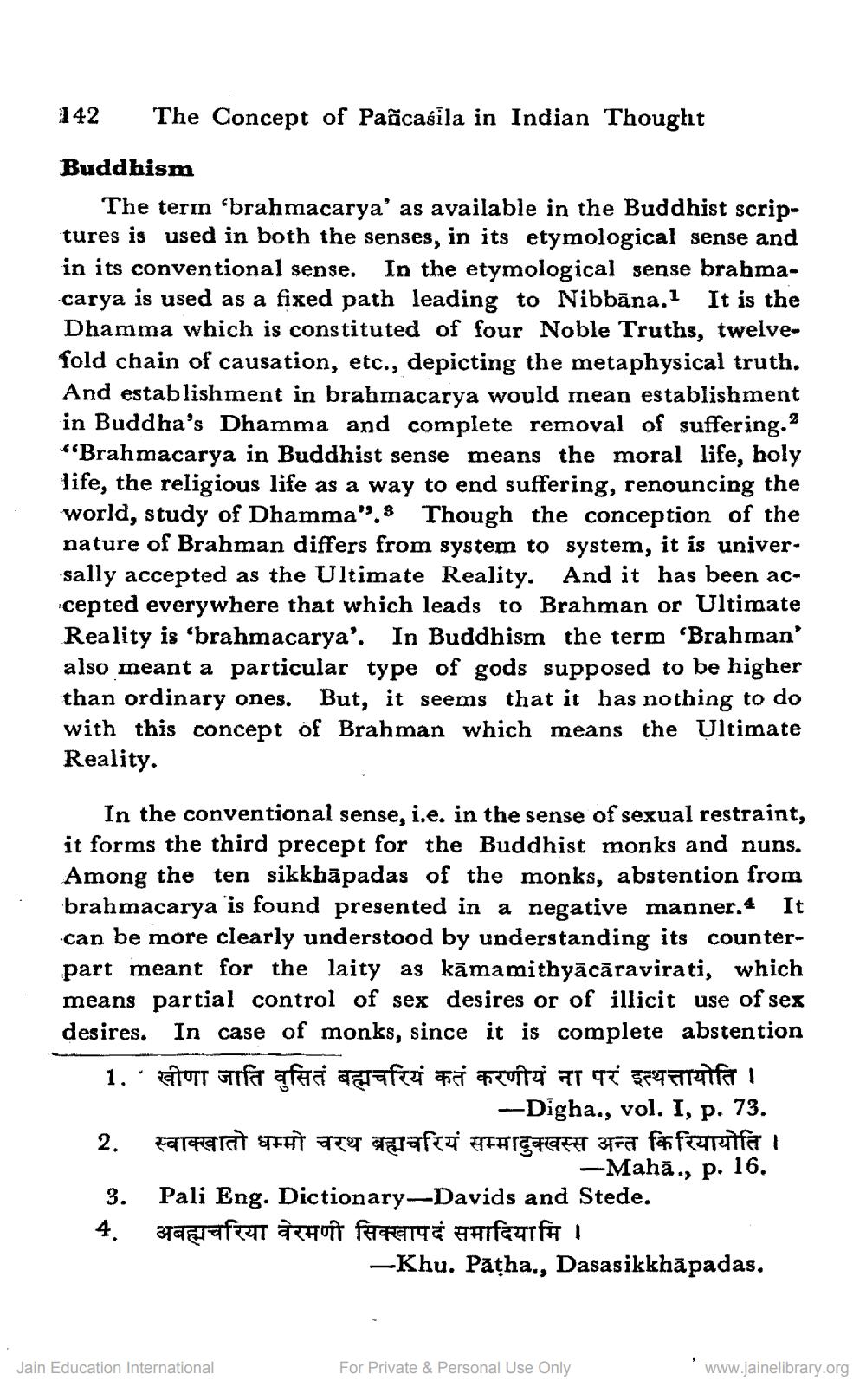________________
142
The Concept of Pancasila in Indian Thought
Buddhism
The term 'brahmacarya' as available in the Buddhist scriptures is used in both the senses, in its etymological sense and in its conventional sense. In the etymological sense brahmacarya is used as a fixed path leading to Nibbāna. It is the Dhamma which is constituted of four Noble Truths, twelvefold chain of causation, etc., depicting the metaphysical truth. And establishment in brahmacarya would mean establishment in Buddha's Dhamma and complete removal of suffering. 2 "Brahmacarya in Buddhist sense means the moral life, holy life, the religious life as a way to end suffering, renouncing the world, study of Dhamma". Though the conception of the nature of Brahman differs from system to system, it is universally accepted as the Ultimate Reality. And it has been accepted everywhere that which leads to Brahman or Ultimate Reality is 'brahmacarya'. In Buddhism the term 'Brahman' also meant a particular type of gods supposed to be higher than ordinary ones. But, it seems that it has nothing to do with this concept of Brahman which means the Ultimate Reality.
In the conventional sense, i.e. in the sense of sexual restraint, it forms the third precept for the Buddhist monks and nuns. Among the ten sikkhāpadas of the monks, abstention from brahmacarya is found presented in a negative manner. It can be more clearly understood by understanding its counterpart meant for the laity as kāmamithyācāravirati, which means partial control of sex desires or of illicit use of sex desires. In case of monks, since it is complete abstention 1. TT Grifa afara agafai FRUTTI ATT TT T rufa i
-Digha., vol. I, p. 73. 2. स्वाक्खातो धम्मो चरथ ब्रह्मचरियं सम्मादुक्खस्स अन्त किरियायोति ।
-Mahā., p. 16. 3. Pali Eng. Dictionary-Davids and Stede. 4. Taarafat acht fred Hifto I
-Khu. Pāțha., Dasasikkhāpadas.
Jain Education International
For Private & Personal Use Only
www.jainelibrary.org




